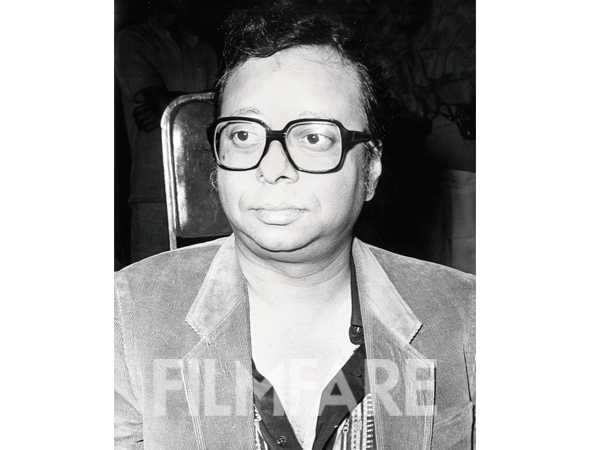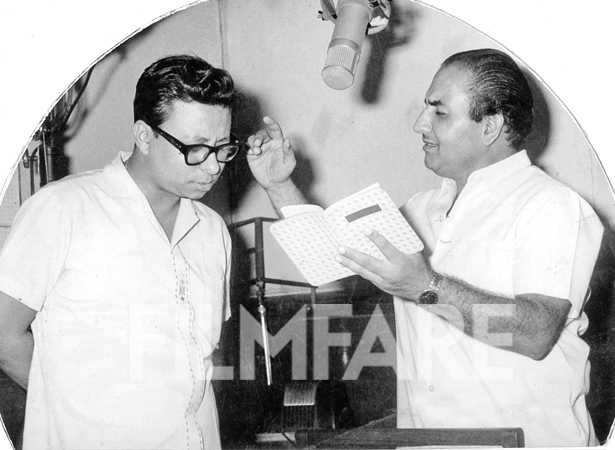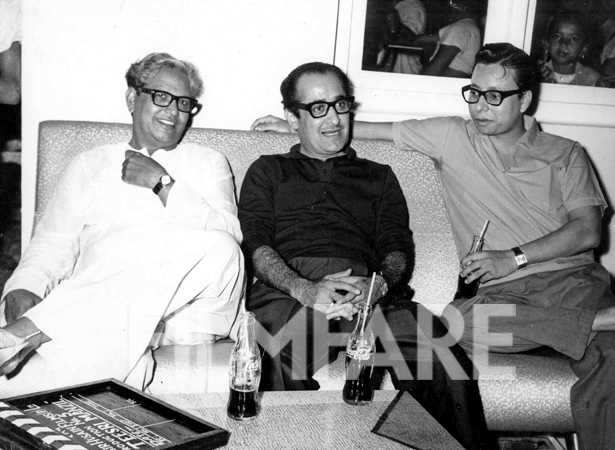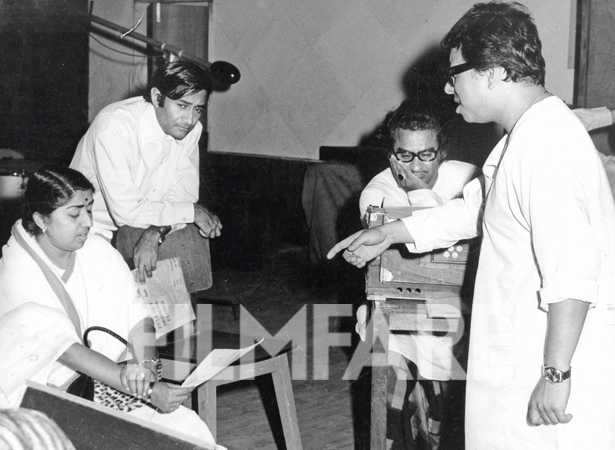
For the purists, he was an anathema, for those born in the ’60s and the ’70s, he was God. You can only think of RD Burman in the extremes. He’s venerated by many as a composer who put Indian music on the international pedestal; he’s reviled by some as a plagiarist, in that most of his hits were alleged copies. Love him, hate him, there’s no denying his due place in the history of Indian film music. He singlehandedly managed to bridge the gap between Hindustani classical and Western tunes, mixing the best of both to create unique masterpieces. He was the son of a music legend, SD Burman, who is said to have never repeated a tune in his long career. It’s hard to carve your own niche being under such a huge influence. But Pancham was able to do so successfully and perhaps surpass his illustrious father in popularity. And at a time, when song programming wasn’t assisted by computers, he managed to create layered masterpieces. He’s said to be a composer’s composer in the sense that professionals still marvel at how he was able to squeeze out such output, given his limited resources. Despite his stature and immense following, Pancham died heartbroken and alone, rebuffed by the industry, which owed him so much. Presenting the highs and the lows of his chequered career…
With Mohammed Rafi
Prodigious '50s
RD Burman was said to be just nine when he reportedly composed the comic song Ae meri topi palat ke aa, used by his father in Fantoosh (1956). Another story goes that he composed the tune for Sar jo tera chakraye from Pyaasa (1957). From an early age, a pattern was apparently set – Dada Burman would work on the hard, complicated numbers while Pancham would set the tunes for soft, fun songs. He had a natural flair for playing instruments and learnt music from such luminaries as sarod player Ali Akbar Khan and tabla player Samta Prasad. He also picked up playing the harmonica. In fact, he’s said to have played the harmonica for the Dev Anand song Hai apna dil toh awara from Solva Saal (1958).
With Majrooh Sultanpuri and Nasir Hussain
Swinging '60s
He became a full-fledged assistant to his father in the late ‘50s and assisted him in films like Chalti Ka Naam Gaadi (1958), Kaagaz Ke Phool (1959), Tere Ghar Ke Samne (1963), Bandini (1963), Ziddi (1964), Guide (1965) and Teen Devian (1965). It was Mehmood who gave him his first break as an independent composer in Chote Nawab (1961). A close friendship developed between them. Pancham also acted alongside Mehmood in Bhoot Bangla (1965). He also developed a bond with Kishore Kumar after Chalti Ka Naam Gaadi, a tie which was to bear fruit with their collaboration in Aradhana (1969) and other Rajesh Khanna hits later.
The composer hit his stride with Teesri Manzil (1966). Shankar-Jaikishan were Shammi Kapoor’s favourite composers but for some reason they were unavailable for the film. He agreed to do a sitting with the young Pancham and immediately connected, reportedly even agreeing on Pancham’s vision for the film. With songs like O haseena zulfowali, Aaja aaja main hoon pyar tera and O mere sona re, the film proved to be one of the biggest musical hits of both Shammi’s and RD’s career. It was produced by Nasir Hussain and Pancham became his favourite composer till Qayamat Se Qayamat Tak (1988), where he was replaced by Anand-Milind. RD’s other hits from the ‘60s include Baharon Ke Sapne (1967), Padosan (1968) and Pyar Ka Mausam (1969).
With father SD Burman
Super '70s
The rise of Rajesh Khanna as a superstar coincided with the rise of RD Burman as a super composer. Rajesh had tasted success with Pancham and Kishore Kumar in Aradhana – apparently the songs were actually composed by Pancham as Dada Burman was ill then. Rajesh favoured both the singer and the composer in the coming years. Kati Patang (1970), with songs like Yeh sham mastani and Yeh jo mohbbat hai, was a musical hit and RD formed a fruitful relationship with director Shakti Samanta, resulting in other hits like Amar Prem (1971), Ajnabee (1974), Aap Ki Kasam (1974) and Mehbooba (1976). Amar Prem, with its classical tunes like Raina beeti jaaye and Chingari koi bhadke, was unlike anything RD ever attempted. It was his answer to the critics who felt he could only ape Western music. Also, Aap Ki Kasam’s soulful track Zindagi ke safar mein remains timeless as an ode to the RD-Rajesh-Anand Bakshi trio.
He also formed a fruitful partnership with Dev Anand during this period, resulting in musical hits like Hare Rama Hare Krishna (1971), where Dum maaro dum acquired cult status, Heera Panna (1973) and Warrant (1975). Lyricist Gulzar was turning filmmaker in the ‘70s and the director and Pancham took their further. Incidentally, Gulzar’s first credited film as a lyricist was Bandini (1963), where he wrote the song Mora gora ang layi le, composed by SD Burman with son RD as the assistant. Their collaboration in films like Parichay (1972) - Beeti na bitai raina is one of the finest classical based duets of Lata, Aandhi (1975), the pinnacle of their partnership and Khushboo (1975), brought back the semi-classical rhythm in Hindi films. Gulzar allowed him to do his own thing and RD, who had utmost respect for Gulzar’s poetry, composed tunes where the singers had prominence while music stayed in the background. An example of this is Mera kuch saaman (Ijazat 1988), a free verse composed in such a way that all you remember is Asha Bhosle’s haunting voice teasing out the meaning.
With Kishore and Asha Bhosle
Dismal '80s
It’s strange that the man whose music reigned in the ’70s suddenly found himself out of favour in the next decade. It was a combination of factors, which led to this. Amitabh Bachchan, the superstar, was doing masala entertainers, which didn’t require great music. Then, all the experiments that RD did in the ’70s were copied shamelessly by others in the ’80s and thereby he became dispensable. He ran out of luck when films carrying his music begin to flop at the box-office. He wasn’t responsible for their fate but somehow people began avoiding him.
But even here, he did not lose his touch. Films like Khoobsurat (1980), Rocky (1981), Yeh Waada Raha (1982), Masoom (1983) Sunny (1984), and Saagar (1985) are proof enough. Anyway, he was always known as a composer who gave hit albums and not hit songs. And the ’80s was a period where his individual songs like Tumse milke zindagi ko yun laga (Chor Police 1983), Roz roz ankhon tale ( Jeeva 1984) or Mammiya kero mama (Arjun 1985) stood out rather than the OST.
With Lata Mangeshkar, Dev Anand and Kishore Kumar
The end... '90s
His star had really dwindled by the ’90s. RD, reportedly had to bribe people to come and have a drink with him. His output almost dwindled and he had only sporadic hits like Tu hai mere dil ki rani (Indrajeet 1991), Jaipur se nikli gaadi (Gurudev 1993) and Sili hawa choo gayi (Libaas 1993) to his credit. His swan song, the super melodious 1942: A Love Story, with songs like Ek ladki ko dekha, Rimjhim rimjhim, Rooth na jaana and Pyar hua chupke se, reminded people he was a giant. But unfortunately, it released three months after his demise on January 4, 1994. It was his best work in almost 15 years and remains, like most of his evergreen songs, as fresh today as when it was released…






SHOW COMMENTS